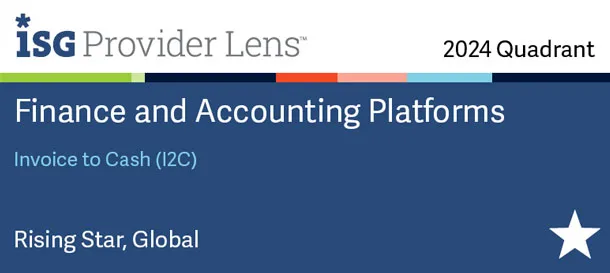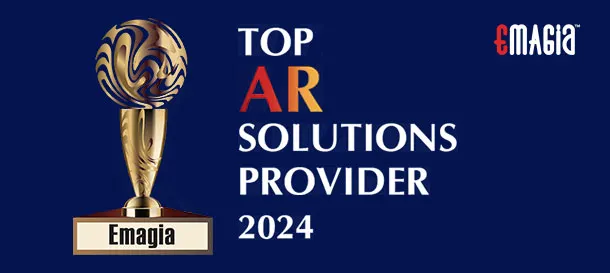In today’s fast-paced business environment, efficiency and accuracy in financial operations are paramount. One critical area where businesses can achieve significant improvements is in their accounts payable processes. This comprehensive guide delves into the concept of accounts payable automation, exploring its benefits, implementation strategies, and the transformative impact it can have on organizations.
Understanding Accounts Payable Automation
Defining Accounts Payable Automation
Accounts payable automation refers to the use of technology to streamline and automate the entire accounts payable process, from invoice receipt to payment processing. By minimizing manual intervention, businesses can reduce errors, enhance efficiency, and improve financial accuracy.
The Evolution of Accounts Payable Processes
Traditionally, accounts payable involved manual tasks such as data entry, invoice matching, and approval routing. With advancements in technology, these processes have evolved to incorporate automation tools that handle repetitive tasks, allowing finance teams to focus on strategic activities.
Key Components of Accounts Payable Automation
Invoice Receipt and Data Capture
Automation begins with the electronic receipt of invoices. Invoices can be received electronically or digitized using Optical Character Recognition (OCR) technology, which extracts relevant data and enters it into the AP system.
Invoice Matching and Validation
Automated systems match invoices against purchase orders and delivery receipts to ensure accuracy. Discrepancies are flagged for review, reducing the risk of overpayments or fraud.
Approval Workflow Automation
Invoices are routed to the appropriate approvers based on predefined rules. Approvers can review and authorize payments electronically, expediting the process and maintaining a clear audit trail.
Payment Processing and Reconciliation
Once approved, payments are scheduled and processed electronically. The system updates records in real-time, ensuring accurate financial reporting and simplifying reconciliation.
Benefits of Accounts Payable Automation
Enhanced Efficiency and Productivity
By automating routine tasks, businesses can process invoices faster and with fewer errors, allowing staff to focus on higher-value activities.
Cost Savings
Automation reduces labor costs associated with manual data entry and approval routing. It also eliminates expenses related to paper checks, envelopes, and postage. Faster processing allows companies to take advantage of early payment discounts offered by vendors.
Improved Accuracy and Reduced Errors
Automated data capture minimizes human errors, ensuring that invoices are processed correctly and reducing the likelihood of duplicate payments.
Better Supplier Relationships
Timely and accurate payments foster trust and collaboration with suppliers, potentially leading to more favorable terms and partnerships.
Enhanced Financial Visibility
Real-time data and analytics provide insights into cash flow, outstanding liabilities, and overall financial health, supporting informed decision-making.
Implementing Accounts Payable Automation
Assessing Current Processes
Begin by evaluating your existing accounts payable workflows to identify bottlenecks, inefficiencies, and areas prone to errors.
Selecting the Right AP Automation Solution
Choose a solution that integrates seamlessly with your existing financial systems, offers scalability, and meets your organization’s specific needs. Consider factors such as user-friendliness, vendor support, and customization options.
Planning and Execution
Develop a detailed implementation plan that includes timelines, resource allocation, and key milestones. Engage stakeholders across departments to ensure buy-in and collaboration.
Training and Change Management
Provide comprehensive training to staff on the new system and establish clear communication channels to address concerns and feedback. Emphasize the benefits of automation to encourage adoption.
Monitoring and Continuous Improvement
Regularly monitor the system’s performance, gather user feedback, and make necessary adjustments to optimize efficiency and address emerging challenges.
Challenges and Considerations
Data Security and Compliance
Ensure that the automation solution complies with industry regulations and has robust security measures to protect sensitive financial information.
Integration with Existing Systems
Seamless integration with current financial and ERP systems is crucial to maintain data consistency and avoid disruptions.
Change Management
Address resistance to change by involving stakeholders early in the process, providing adequate training, and highlighting the benefits of automation.
Cost of Implementation
While automation offers long-term savings, initial implementation can be costly. Conduct a cost-benefit analysis to ensure a positive return on investment.
Future Trends in Accounts Payable Automation
As we progress into 2025, accounts payable (AP) automation is experiencing significant advancements, driven by emerging technologies and evolving business needs. Key trends shaping the future of AP automation include:
1. Artificial Intelligence (AI) and Machine Learning Integration
AI and machine learning are transforming AP processes by enabling predictive analytics, anomaly detection, and continuous process improvements. These technologies enhance decision-making and operational efficiency.
2. Blockchain Technology
Blockchain offers increased transparency and security in transactions, providing an immutable ledger that streamlines verification and reconciliation processes. This technology enhances trust and efficiency in AP operations.
3. Robotic Process Automation (RPA)
RPA handles repetitive tasks with high precision, reducing manual intervention and errors. It automates data entry, invoice processing, and other routine activities, allowing staff to focus on strategic tasks.
4. Advanced Data Analytics
Leveraging advanced analytics provides deeper insights into spending patterns, supplier performance, and process bottlenecks. This data-driven approach supports informed decision-making and strategic planning.
5. Cloud-Based Solutions
Cloud-based AP solutions offer scalability, flexibility, and remote accessibility. They facilitate real-time collaboration and data sharing, enhancing efficiency and responsiveness.
6. Enhanced Security Measures
With increasing cyber threats, robust security measures are crucial. Implementing advanced encryption, multi-factor authentication, and continuous monitoring ensures the protection of sensitive financial data.
7. Mobile Accessibility
Mobile-friendly AP platforms enable professionals to manage approvals, monitor transactions, and access reports on the go, increasing flexibility and responsiveness.
8. Supplier Portals and Collaboration Tools
Dedicated supplier portals enhance communication, streamline document exchange, and provide real-time status updates, strengthening supplier relationships and improving process transparency.
9. Sustainable Practices
There’s a growing emphasis on sustainability in AP processes, such as reducing paper usage through electronic invoicing and payments, contributing to environmental responsibility.
10. Comprehensive ERP Integration
Integrating AP automation with Enterprise Resource Planning (ERP) systems ensures seamless data flow across departments, enhancing accuracy and providing a unified view of financial operations.
How Emagia Revolutionizes Accounts Payable Automation
Emagia is at the forefront of transforming accounts payable processes through its innovative automation solutions. By leveraging advanced technologies, Emagia offers a comprehensive suite of tools designed to enhance efficiency, accuracy, and financial control.
Key Features of Emagia’s AP Automation Solution:
- AI-Powered Invoice Processing: Utilizes artificial intelligence to automatically capture, interpret, and process invoice data, significantly reducing manual effort and errors.
- Smart Approval Workflows: Configurable workflows ensure invoices are routed to the appropriate approvers promptly, accelerating the approval process and maintaining compliance.
- Real-Time Analytics and Reporting: Provides actionable insights into AP metrics, cash flow, and supplier performance, supporting informed decision-making.
- Seamless ERP Integration: Ensures smooth data exchange with existing ERP systems, maintaining data consistency and enhancing operational visibility.
- Supplier Collaboration Portal: Facilitates better communication and collaboration with suppliers, offering real-time updates on invoice statuses and payments.
By implementing Emagia’s accounts payable automation solutions, businesses can achieve:
- Increased Operational Efficiency: Streamlining AP processes reduces cycle times and operational costs.
- Enhanced Accuracy: Automation minimizes human errors, ensuring precise invoice processing and payment.
- Improved Cash Flow Management: Real-time visibility into payables supports better cash flow forecasting and management.
- Stronger Supplier Relationships: Timely payments and transparent processes foster trust and collaboration with suppliers.
Emagia’s commitment to innovation and excellence makes it a valuable partner for organizations seeking to modernize their accounts payable functions and stay ahead in a competitive business landscape.
Frequently Asked Questions (FAQs)
What is accounts payable automation?
Accounts payable automation involves using technology to streamline and automate the AP process, from invoice receipt to payment, reducing manual intervention and increasing efficiency.
How does AI enhance accounts payable processes?
AI improves AP processes by enabling predictive analytics, detecting anomalies, and facilitating continuous process improvements, leading to better decision-making and operational efficiency.
What are the benefits of integrating AP automation with ERP systems?
Integrating AP automation with ERP systems ensures seamless data flow across departments, enhances accuracy, and provides a unified view of financial operations, improving overall efficiency.
How does blockchain technology impact accounts payable?
Blockchain provides increased transparency and security in transactions, offering an immutable ledger that streamlines verification and reconciliation processes in AP operations.
Why is mobile accessibility important in AP automation?
Mobile-friendly AP platforms allow professionals to manage approvals, monitor transactions, and access reports on the go, increasing flexibility and responsiveness in AP processes.
By staying informed about these trends and leveraging advanced solutions like Emagia’s AP automation, businesses can optimize their accounts payable processes, achieve greater financial control, and maintain a competitive edge in the evolving marketplace.







